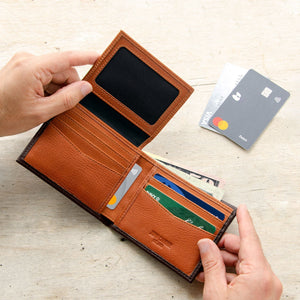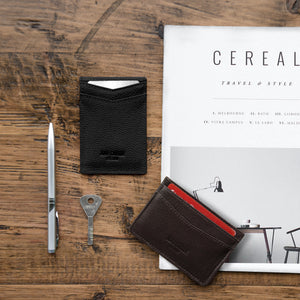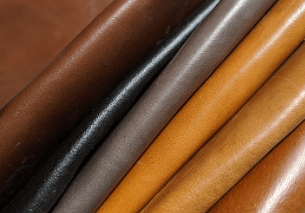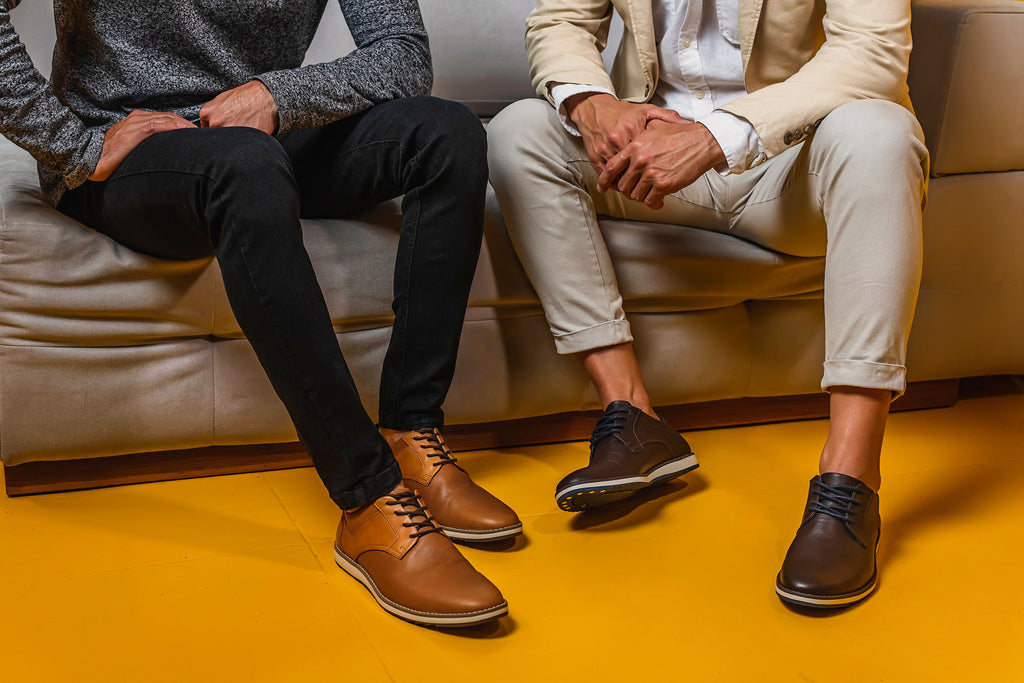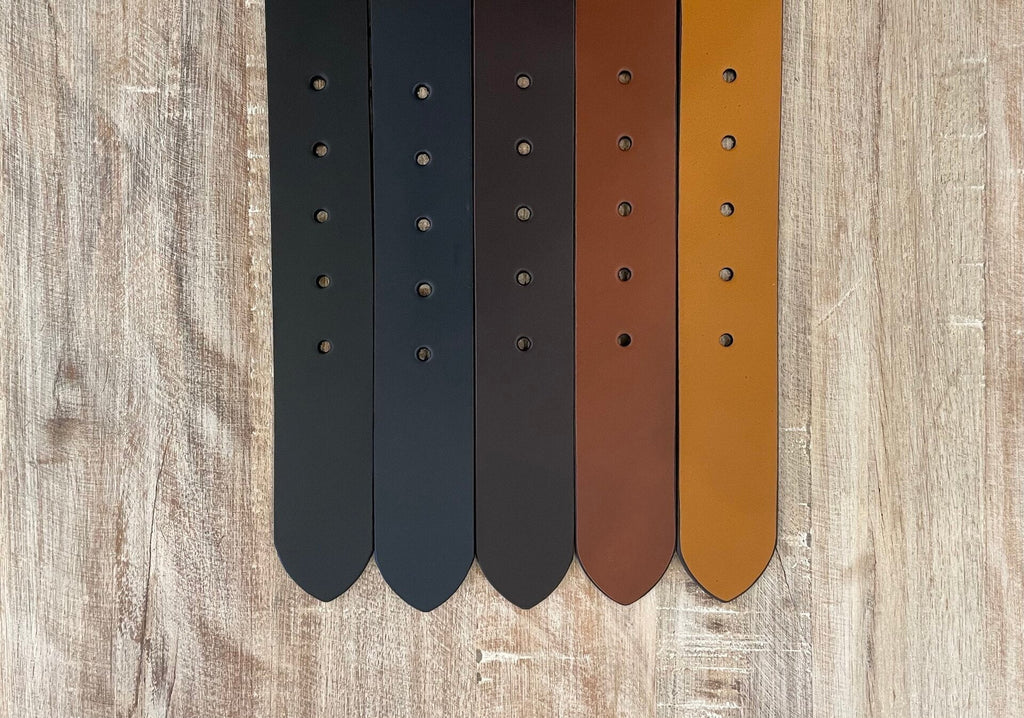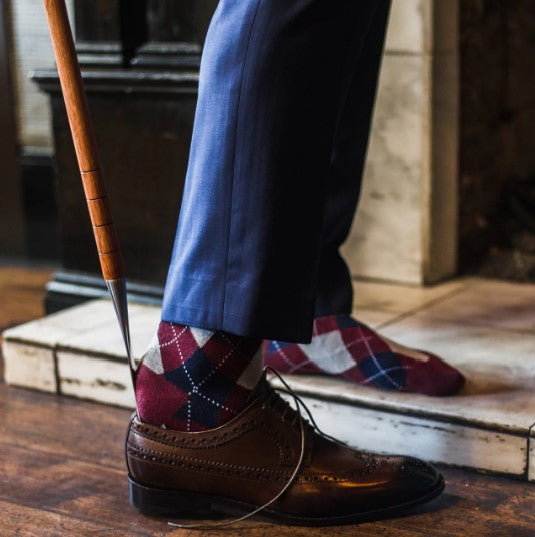
How to Use a Shoe Horn
The shoe horn, an understated but invaluable tool for anyone who values both comfort and preservation of their finely crafted footwear. A well-made shoe horn ensures that the integrity of the leather and the overall structure of the shoe remain intact.
In this guide, we’ll explore how to use a shoe horn correctly, with specific insights into using it for different types of shoes, including boots, and the advantages of long-handled versions.
How to Use a Shoe Horn: The Short Answer
A shoe horn is a tool designed to make it easier to slip into your shoes while maintaining the shape and longevity of your footwear. To use one, simply insert the curved end into the back of the shoe, slide your foot in while keeping the shoe horn in place, and remove it once your foot is securely inside. This simple process prevents damage to the heel and ensures an easy, comfortable fit every time.
Detailed Steps: How to Use a Shoe Horn (General Use)
When working with high-quality leather shoes, attention to detail is important. A shoe horn, when used properly, ensures that you treat your footwear with the care it deserves. Here's a more detailed look at how to use this tool effectively:
- Preparation: Start by sitting down or standing, depending on the type of shoe horn you’re using. Ensure your shoelaces are loosened completely, as tight laces can create unnecessary pressure on both the shoe horn and the shoe itself.
- Inserting the Shoe Horn: Hold the shoe horn with the curved end facing the back of the shoe. Position it gently so that the curve rests against the heel counter, the part of the shoe most vulnerable to creasing and damage. A well-placed shoe horn acts as a protective barrier between your foot and the shoe, preventing unnecessary wear.
- Sliding Your Foot: Slowly slide your foot into the shoe, allowing your heel to glide along the smooth surface of the shoe horn. The key here is control; avoid any sudden movements that might put stress on the back of the shoe. The shoe horn's gentle curve should guide your foot in seamlessly.
- Removing the Shoe Horn: Once your foot is comfortably inside, remove the shoe horn by sliding it upward with care. Avoid tugging too quickly, as this can not only damage the leather but also lead to discomfort. The goal is to create a fluid motion that respects the craftsmanship of the shoe.
Using a Shoe Horn with Boots
Boots, particularly those that rise above the ankle or have a tighter shaft, have their own unique challenges. Whether you're dealing with supple leather ankle boots or structured knee-high designs, using a shoe horn can make the process easier and help maintain the boot’s shape over time. A short shoe horn simply won’t do the job for boots; for this type of footwear, a medium or long shoe horn is essential.
- Choosing the Right Shoe Horn: A long or medium-length shoe horn allows for the necessary reach and angle to guide your foot into a boot without crushing the boot’s structure. Short shoe horns may be convenient for other types of shoes, but for boots, you need the length and flexibility that only a long shoe horn can offer.
- Technique for Boots: First, ensure your boot’s zipper or laces are fully loosened or unfastened. Insert the shoe horn into the back of the boot, aligning it with the heel counter. As with any shoe, slide your foot in gently, allowing the shoe horn to guide your foot through the tighter shaft of the boot. This helps avoid unnecessary strain on the leather, preventing creases and maintaining the shape of your investment.
- Common Issues with Boots: Boots, by nature, require a bit more effort to put on. Thinner socks can make this easier, as they allow for a smoother slide. Also, ensure that the shoe horn remains vertical throughout the process to prevent misalignment that could damage either the boot or the shoe horn itself. A properly used shoe horn will keep both your boots and your feet in pristine condition.
How to Use a Long-Handle Shoe Horn
Long-handled shoe horns are ideal for those who want to avoid bending or crouching, making them especially popular among individuals with limited mobility or back pain. But beyond convenience, long shoe horns offer an ergonomic way to protect your shoes from wear.
- Why Choose a Long-Handle Shoe Horn: For tall boots or people who prefer to stand while putting on shoes, a long-handled shoe horn is a must-have. These tools provide ease of use by allowing you to maintain an upright posture, which can be a lifesaver if you have back issues or simply want to avoid unnecessary bending.
- Proper Technique: Begin by standing upright, holding the handle of the shoe horn firmly. Insert the curved end into the back of your shoe or boot and slide your foot down the length of the shoe horn. The key here is to let gravity do most of the work. The long handle ensures that your shoe horn stays in place as your foot glides into the shoe effortlessly, protecting the heel counter from any undue stress.
- Care Tips for Long Shoe Horns: Just like your fine leather shoes, your shoe horn needs care. Avoid storing it in a way that might cause the handle to warp. If it’s made of wood or horn, occasional polishing can keep it looking its best, ensuring that this elegant tool continues to serve you well for years to come.
Common Mistakes and How to Avoid Them
Even the simplest tools, like the shoe horn, can be misused, often leading to unnecessary damage to your footwear or discomfort when putting on your shoes. Let’s explore the most common mistakes people make when using a shoe horn and how you can avoid them to ensure that your shoes maintain their form and longevity.
- Not Loosening Shoelaces: One of the most frequent errors is attempting to use a shoe horn without first loosening the shoe laces. Tight laces restrict the shoe’s opening, putting excessive pressure on both the shoe horn and the back of the shoe. Always make sure your laces are fully loosened before sliding your foot in.
- Using the Wrong Size Shoe Horn: Not all shoe horns are created equal. Using a short shoe horn with tall boots, for example, will only lead to frustration and potential damage to the leather. Ensure you’re using the right tool for the right shoe—short shoe horns for dress shoes or loafers, and long shoe horns for boots and higher-cut shoes.
- Incorrect Insertion: A common mistake is positioning the shoe horn at an angle or off to the side, which can lead to improper alignment of your foot and damage to the heel counter of the shoe. The shoe horn should always be inserted straight into the back of the shoe, with the curve aligned to cradle your heel smoothly.
Final Thoughts: Master the Art of Using a Shoe Horn
Mastering the use of a shoe horn may seem like a small detail, but as with all fine things in life, it’s the details that make the difference. Whether you're slipping into a pair of bespoke leather shoes or pulling on a pair of tall boots, using a shoe horn ensures that your footwear maintains its structure and continues to provide you with comfort and style for years to come. Take the time to invest in a quality shoe horn and practice proper technique—it’s a small habit that can lead to an improvement in your wardrobe and your daily routine.

- Choosing a selection results in a full page refresh.
- Press the space key then arrow keys to make a selection.

